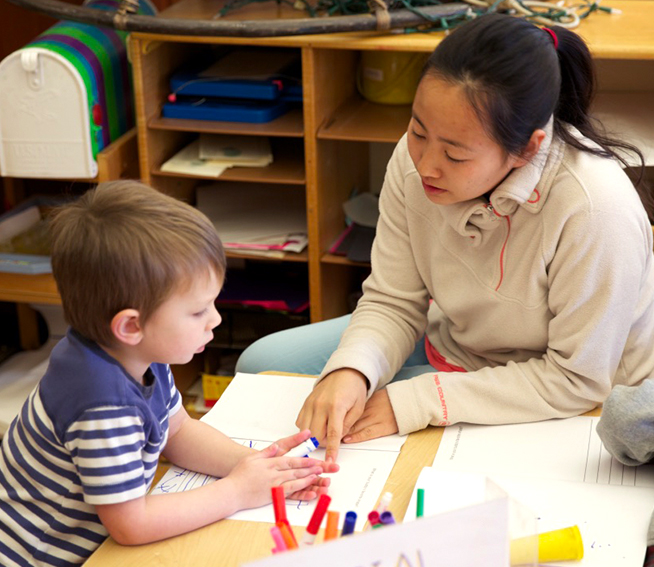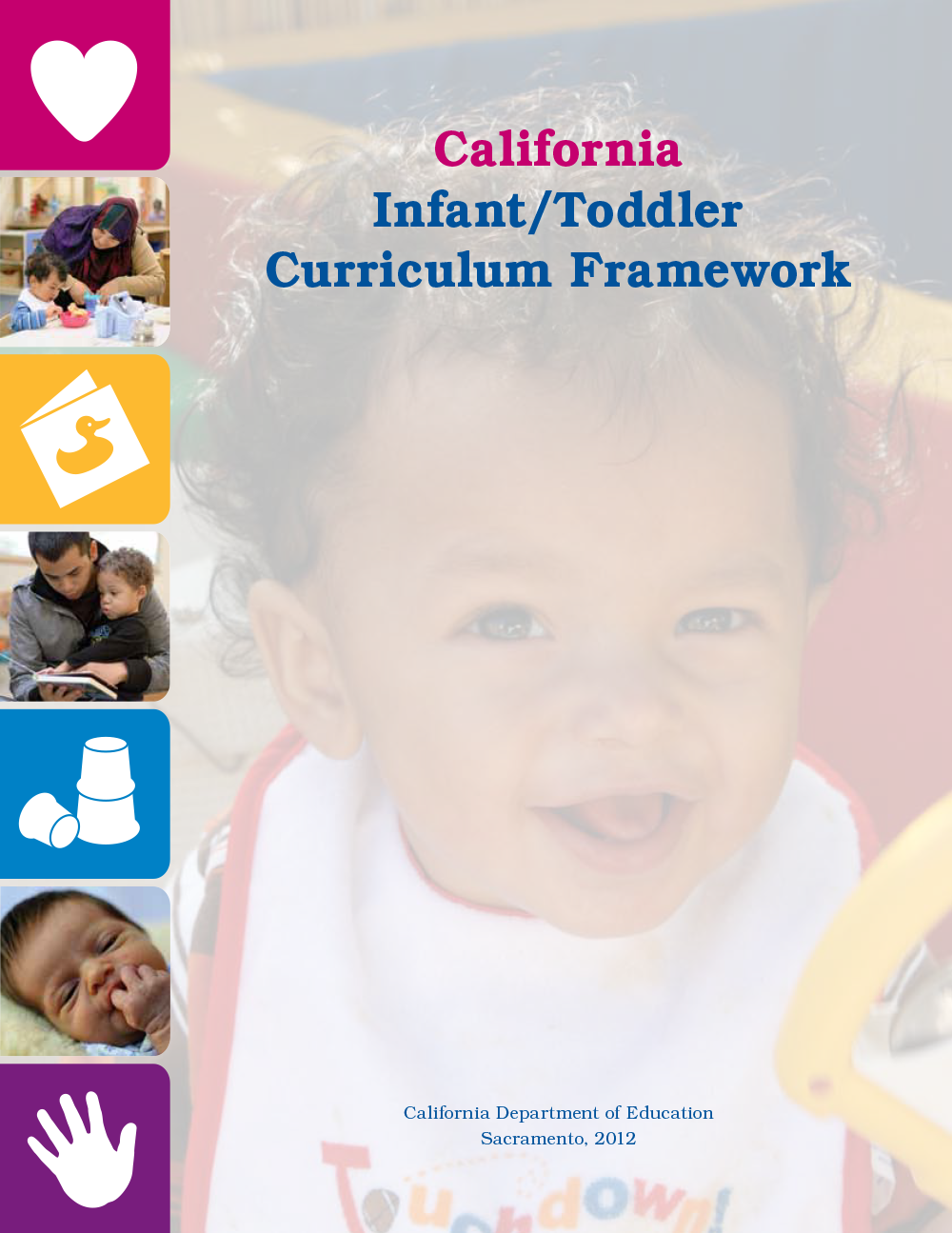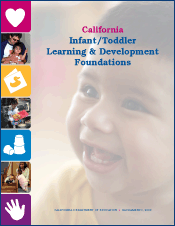Sharing Deep Understanding of Child Development to Support Better Outcomes
Posted on by Catherine Tsao

With more than 40 years in the business of child care, Mary Thomas has learned a thing or two about young children. But that doesn’t mean she rests on her laurels. “I think you can learn something every day from the children,” says Thomas, founder and program director of Our Special Place Daycare, located in the Ingleside district of San Francisco.
This kind of growth mindset is pivotal to what the Family Child Care Pathways Cohort (FCC Pathways), a new WestEd-spearheaded program, is striving to instill in participants. Now entering its third year, the program is a yearlong training and coaching service for early childhood education (ECE) professionals and is delivered in Spanish, Cantonese, Mandarin, and English. For a majority of participants, English is their second language.
Drawing on research-based resources developed by WestEd, including the California Infant/Toddler Learning and Development Foundations and the California Infant/Toddler Curriculum Framework, the FCC Pathways program arose out of a partnership with First 5 San Francisco and the SF Family Child Care Quality Networks. The program was designed from the ground up specifically for family child care, says Catherine Tsao, a senior program associate in the Center for Child and Family Studies at WestEd. “We use an in-depth, integrated, sequential approach to training in which new learning builds upon prior learning.”
At the heart of this effort, she says, is a key question: “Can we spark improvements in practice by helping educators fall in love with the study of child development?”
An Integrated Approach to Professional Development
The program developers sought to surpass the scope of similar family child care trainings, which are more compartmentalized and focus mainly on compliance with regulations. By contrast, the FCC Pathways program takes on the ambitious goal of “deepening ECE professionals’ understanding of child development in order to support better outcomes for children,” says Tsao. To achieve this, the training weaves together answers to three overarching questions:
- What does science tell us about how infants and toddlers learn and grow?
- Which program practices and curricular strategies support their development?
- How do you know whether you’re having an impact on the children in your care?
Responsiveness to educator needs. Rather than racing around to multiple “drive-through,” piecemeal trainings each year as ECE professionals have had to do in the past, FCC Pathways allows them to participate in a single cohesive program. The program consists of 56 hours of in-person training, with individual and small-group support built in. “We focused on making the experience more integrated and less disjointed for participants,” says Tsao.
Organized by language, each cohort comprises up to 10 family child care programs. “Learning with a cohort of peers was enlightening,” says Thomas. “We were able to really dig into the content and share all of our experiences.”
Participants also have the option of receiving three units of higher education academic credit through a partnership with California State University, Fresno — “which is a big bonus, as many of the participants have not had much access to postsecondary coursework in their home languages,” says Tsao.
A deep dive into development. FCC Pathways targets family child care programs participating in the San Francisco Quality Rating and Improvement System (QRIS) — programs that serve children receiving subsidized child care. But the training goes well beyond simply ensuring that participants can comply with QRIS regulations. The FCC Pathways program “takes a deep dive into understanding developmental constructs as the foundation for supporting children’s learning,” says Tsao.
Rather than giving just a cursory overview of the cognitive development domain, for instance, the class delves deeply into the various components of that domain, such as memory, how it evolves over the birth-to-three period, and how it affects children’s executive functioning skills. “Participants have told me, ‘I never knew there was so much to this,’” says Tsao.
Annie Liu wholeheartedly agrees. A participant in a Mandarin cohort, she runs a small family child care program in San Francisco’s South of Market neighborhood. Although already somewhat familiar with some of the materials being used, she was impressed by how the cohort “really looked deep into [the content]. With previous training, I felt a gap between what I had learned and what I was facing.” Being able to learn from the different experiences of her cohort classmates and having a full year to absorb the information through assignments, practice, and coaching took her knowledge to a completely different level, says Liu.
A Deeper Understanding of Child Assessment
Family child care programs receiving funding from the California Department of Education are required to complete observations of each child they serve using the Desired Results Developmental Profile (DRDP) tool. People often see completing an observational child assessment as little more than a mandate, says Tsao, focusing on what they have to do or how they fill out a form.
“Instead, with this program, we’re helping participants build an understanding of why they do an observational child assessment,” says Tsao. “If you deeply understand child development, the ‘what’ and the ‘how’ will flow from it in a much more meaningful way. Observational child assessment gives you a chance to develop a deeper connection with a child — to understand them better so you can more fully support their development.”
The importance of observation and documentation. At the beginning of the training, participants are asked to pick a single child to observe and to document their observations in a journal over the course of the year. The documentation assignments are structured to help participants think about the integrated nature of child development. “Doing this over time instills the habit and value of documentation,” notes Tsao.
“This training made me go deeper into observation, which I loved,” says Thomas, whose two feisty twin grandsons attend her family daycare. Thomas found that the documentation process enabled her to achieve a more objective view of what was happening with the children in her care. “When you document it, you don’t judge it, you don’t put any of your biases in there,” says Thomas. “Rather than just relying on your general impression of a child, you write down what they are actually doing.”
It wasn’t until she added regular documentation to her observations that she realized which of her twin grandsons was the instigator in some challenging interactions between the two. She cites another benefit of learning how to document: “The written information is easier to share with parents and any other organizations that are providing assistance to the children,” she says.
Early Signs of Progress
Although feedback about the program is primarily anecdotal at this point, Tsao is heartened by what she is seeing and hearing about it so far.
Positive QRIS rater feedback. QRIS raters in San Francisco have spontaneously given feedback about the FCC Pathways participants, says Tsao. “When conducting ratings, they say that they can tell which individuals have gone through our cohort.” What’s the tip-off? “For starters, they see FCC Pathways educators conducting observations year-round, rather than just during ‘DRDP season,’” she says.
In addition, QRIS raters have reported that FCC Pathways participants are able to reference the California Infant/Toddler Learning & Development Foundations, for example, and explain how they use it to engage with families and in their curriculum-planning process, says Tsao.
Seeing clearly. One ECE professional told an FCC Pathways trainer that prior to being in the cohort, she was frustrated by some of the children’s behaviors and what she saw as a lack of progress. “But after she was in the cohort for a while,” says Tsao, “she reflected, ‘I now realize that I just didn’t know what to look for. Now I can see intricacies and nuances in development that I was missing before.’”
Liu notes that she has become more reflective in her practice since participating in the cohort. “At the beginning, I didn’t think about [reflection].” But now, she says, after she conducts observations and plans her curriculum, she takes time to reflect, noting that it is an important way to help her figure out “which way to go for the next step.”
Next Steps on the Pathway
Recruitment has begun for the class of 2020, says Tsao, with plans for a Part 2 cohort that will drill down even further into implementation.
To refine and improve the program as it moves forward, Tsao initially “invested an incredible amount of resources to make sure our coaching team was well equipped to address participants’ needs.” She also notes that she and the coaches will continue to gather participant feedback through interviews and surveys, as well as review certain assignments from the training, in order to hone the program and “understand how participants are making a difference for the children they serve.”
Ultimately, she hopes that the training not only helps ECE professionals better support the children in their care, but also helps them become more engaged and passionate about their work.
“If you’re motivated to keep learning about child development and ensure that the children in your care can achieve their full potential, that can be an incredibly powerful retention tool — which is particularly important in a field known for high turnover. We want educators to embrace the incredible opportunity, responsibility, and privilege that comes with the job.”
For more information about the San Francisco Family Child Care Pathways Cohort, contact Catherine Tsao at 415.819.7825 or ctsao@WestEd.org.
The San Francisco Family Child Care Pathways Cohort is supported by a grant from First 5 San Francisco.


